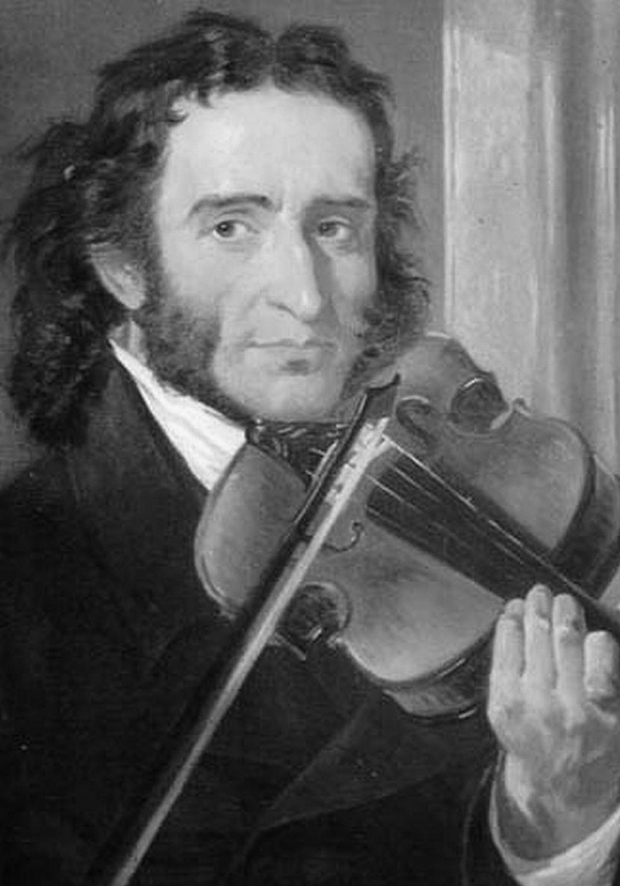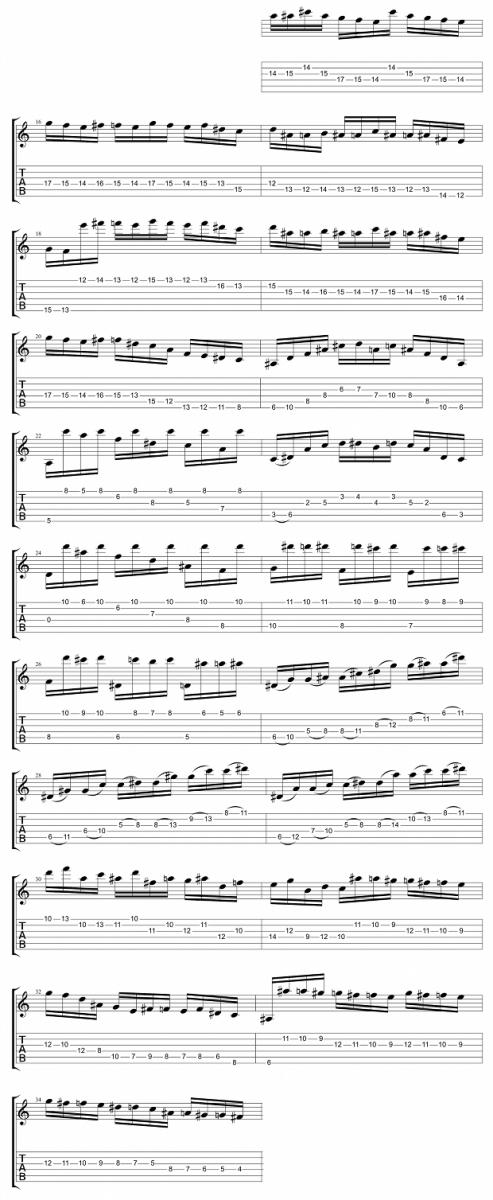Bent Out of Shape: Learning Paganini's 16th Caprice in G Minor, Part 2

Last time, we started to learn Paganini's 16th Caprice in G Minor.
The first part took you to bar 14 of the piece. This week, we will continue with the second part.
After receiving a few questions from readers concerning Part 1, I wanted to quickly address an important issue. I forgot to tell you that in some circumstances, you might find it easier to arrange some of the notes differently than what the tab states in certain sections.
As long as you are playing the exact same notes, it is totally fine to rearrange the positions on the fret board in order make it easier for you to play. The tab is just a suggestion for where the notes should be played.
Now, let's look at the next part of the piece. Here is the 16th Caprice performed by me, in its entirety, at 100 bpm. Feel free to use it as a guide. Part 2 begins at 0:42 and ends at 1:18. I've also put markers on the file to help you navigate.

Starting at the first bar (bar 15), we have some linear sequences that are a nice break from the wide intervals and arpeggios from the previous part. At bar 18, there is a tricky jump from low E to high E, but it shouldn't be too tricky with some practice. After this section, we move back to an A# major arpeggio in bar 21 followed by some pedal point sequences in bar 22.
This motif is mimicked in the next two bars with a C diminished arpeggio followed by another pedal point sequence with some extremely wide intervals in bar 24. Use your pinky to play the D note on the high E string and your first finger to play the descending bass notes. This bar could be picked using a hybrid of the pick and fingers or entirely with the pick.
Bars 25 and 26 have an interesting chromatic pedal point motif, which requires you "skip strings" between the A and high E. The next three bars will challenge you with some wide stretches. They contain ascending arpeggio sequences played in two note groupings.
The tab suggests you should use legato hammer-ons for each group, but I prefer to pick each note. This section can be difficult due to the wide stretches and amount of notes/positions to remember for each bar. I use my first finger and pinky exclusively for these sequences. As I said in Part 1, begin very slow and master each section at a slow comfortable pace before increasing the tempo.
Following this section is a much-welcomed descending sequence at bar 30 using thirds over much smaller intervals. Then we finish Part 2 with some descending chromatic runs, which compared to previous sections, should be fairly easy to execute.
Next week, we will look at the final part of the piece with an ending review on how learning this piece will help improve your playing.
Will Wallner is a guitarist from England now living in Los Angeles. He recently signed a solo deal with Polish record label Metal Mind Productions for the release of his debut album, which features influential musicians from hard rock and heavy metal. He also is the lead guitarist for White Wizzard (Earache Records) and in 2012 toured Japan, America and Canada. Follow Will on Facebook and Twitter.
Get The Pick Newsletter
All the latest guitar news, interviews, lessons, reviews, deals and more, direct to your inbox!
“There are so many sounds to be discovered when you get away from using a pick”: Jared James Nichols shows you how to add “snap, crackle and pop” to your playing with banjo rolls and string snaps
Don't let chord inversions bamboozle you. It's simply the case of shuffling the notes around







![Joe Bonamassa [left] wears a deep blue suit and polka-dotted shirt and plays his green refin Strat; the late Irish blues legend Rory Gallagher [right] screams and inflicts some punishment on his heavily worn number one Stratocaster.](https://cdn.mos.cms.futurecdn.net/cw28h7UBcTVfTLs7p7eiLe.jpg)


